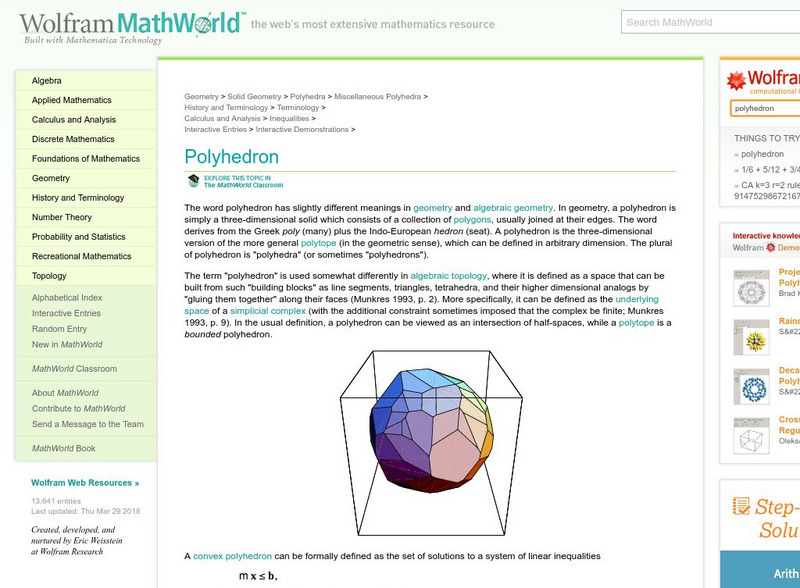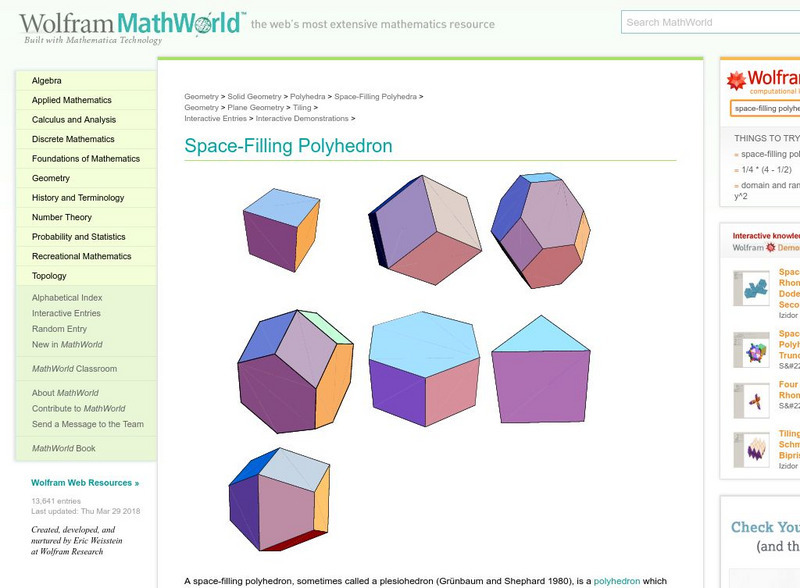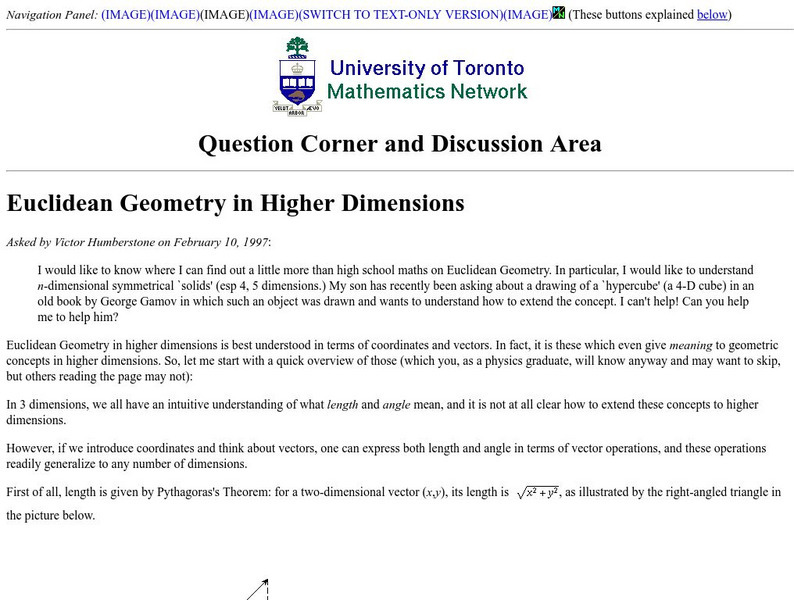EngageNY
End-of-Module Assessment Task - Geometry (module 3)
It's test time! Determine your class's understanding of the topics of volume and cross sections with a thorough assessment on volume, area, and geometric shapes.
EngageNY
The Volume Formula of a Sphere
What is the relationship between a hemisphere, a cone, and a cylinder? Using Cavalieri's Principle, the class determines that the sum of the volume of a hemisphere and a cone with the same radius and height equals the volume of a...
EngageNY
Scaling Principle for Volumes
Review the principles of scaling areas and draws a comparison to scaling volumes with a third dimensional measurement. The exercises continue with what happens to the volume if the dimensions are not multiplied by the same...
EngageNY
Definition and Properties of Volume
Lead a discussion on the similarities between the properties of area and the properties of volume. Using upper and lower approximations, pupils arrive at the formula for the volume of a general cylinder.
EngageNY
General Pyramids and Cones and Their Cross-Sections
Are pyramids and cones similar in definition to prisms and cylinders? By examining the definitions, pupils determine that pyramids and cones are subsets of general cones. Working in groups, they continue to investigate the relationships...
EngageNY
Three-Dimensional Space
How do 2-D properties relate in 3-D? Lead the class in a discussion on how to draw and see relationships of lines and planes in three dimensions. The ability to see these relationships is critical to the further study of volume and...
EngageNY
How Do 3D Printers Work?
If we stack up all the cross sections of a figure, does it create the figure? Pupils make the connection between the complete set of cross sections and the solid. They then view videos in order to see how 3D printers use Cavalerie's...
EngageNY
The Volume of Prisms and Cylinders and Cavalieri’s Principle
Young mathematicians examine area of different figures with the same cross-sectional lengths and work up to volumes of 3D figures with the same cross-sectional areas. The instruction and the exercises stress that the two...
EngageNY
General Prisms and Cylinders and Their Cross-Sections
So a cylinder does not have to look like a can? By expanding upon the precise definition of a rectangular prism, the lesson plan develops the definition of a general cylinder. Scholars continue on to develop a graphical...
Shodor Education Foundation
Cross Sections
Use this activity on cross-sections of three-dimensional shapes in your math class to work on algebra or geometry Common Core standards. The instructional activity includes a list of relevent terminology, and a step-by-step process to...
That Quiz
That Quiz: Practice Test: Geometry
This resource allows users to test their geometry knowledge.
Wolfram Research
Wolfram Math World: Polyhedron
This is a detailed site with numerous links related to polyhedrons, the site explains the term polyhedron in terms of geometry and algebraic topology it briefly discusses special polyhedrons which link to other Math World sites which...
Wolfram Research
Wolfram Math World: Space Filling Polyhedron
This MathWorld site shows pictures of polyhedra which can fill space. A discussion of these figures follows.
National Council of Teachers of Mathematics
The Math Forum: Ask Dr. Math: Polyhedra Classification
This question and answer site provides a lot of basic information about polyhedra. The five regular polyhedra, "The Platonic Solids," are described.
University of Toronto (Canada)
Question Corner: Higher Dimension Geometry
Use this site to discover how we represent higher dimensional objects in mathematics and how one might draw a four dimensional object on two dimensional paper and modeling fourth degree tetrahedron.
Wolfram Research
Wolfram Math World: Frustum
Math World site offers the definition of frustum and links to view a frustum of a pyramid, cone, and sphere.

















